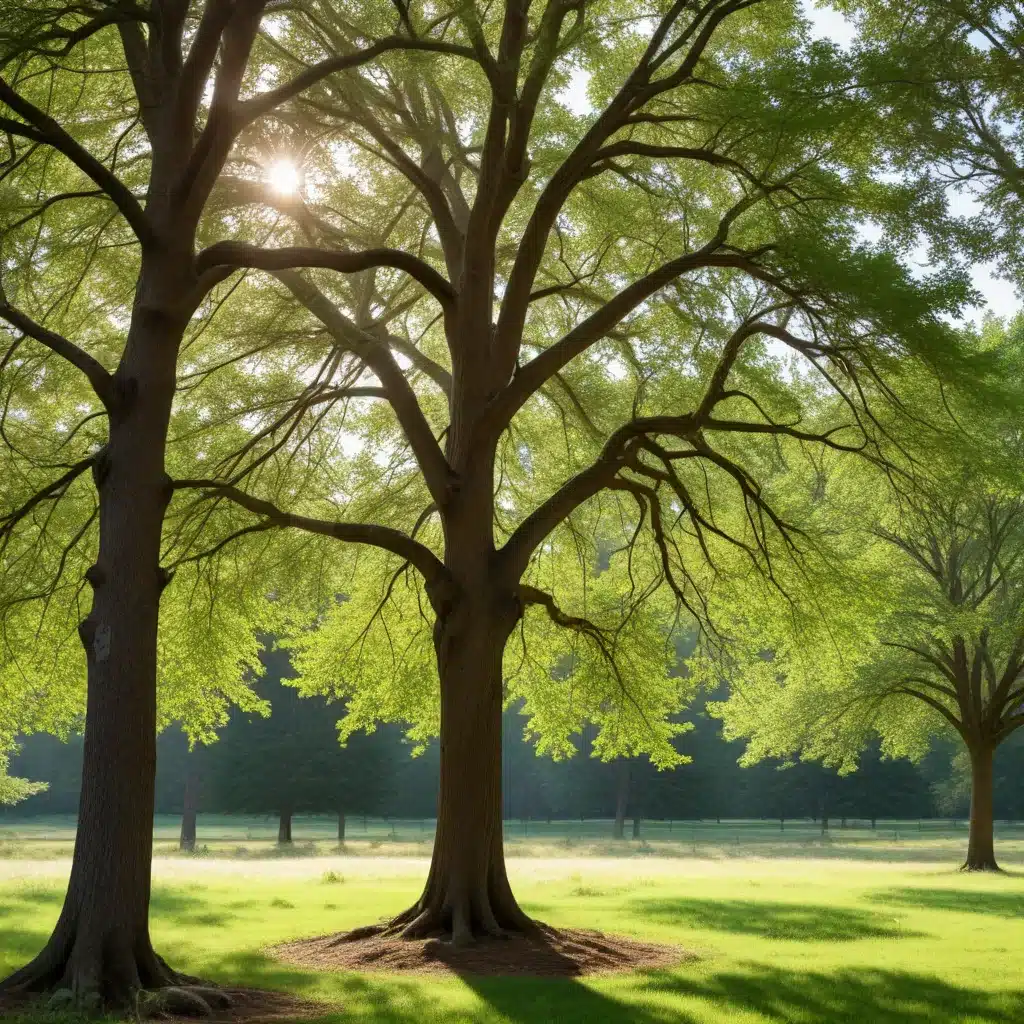
Harnessing Seasonal Cycles for Optimal, Sustainable Tree Performance, Stewardship, and Ecosystem Benefits
Trees are remarkable living organisms, uniquely adapted to thrive within the cyclical rhythms of their natural environments. At TriCounty Tree Care, we understand that by aligning our management practices with the seasonal processes governing tree growth and function, we can optimize the long-term health, resilience, and ecosystem services provided by the urban forest.
Seasonal Adaptations in Trees
Dormancy and Bud Break: As the days grow shorter and temperatures cool in autumn, deciduous trees enter a state of dormancy, diverting their energy resources away from aboveground growth and toward the development of robust root systems. This natural cycle primes young trees for successful transplantation, as their focus shifts to establishing a strong foundation before the demands of spring growth. Conversely, the arrival of warmer temperatures and longer daylight hours in spring triggers bud break and the resurgence of aboveground activity, with trees allocating resources to leaf expansion, flower formation, and wood growth.
Photosynthetic Capacity and Leaf Phenology: The seasonal fluctuations in a tree’s photosynthetic capacity are closely tied to its leaf phenology – the seasonal patterns of leaf emergence, expansion, senescence, and abscission. During the growing season, leaves rapidly expand, maximizing the tree’s ability to capture sunlight and convert it into the carbohydrates essential for growth and maintenance. As autumn approaches, leaves gradually transition through vibrant colors before ultimately detaching, allowing the tree to conserve resources and enter dormancy.
Sustainable Tree Management
Pruning and Canopy Management: By aligning our pruning activities with a tree’s seasonal cycles, we can optimize the impact of our interventions and promote long-term health. Dormant-season pruning, performed in late fall or early winter, allows trees to redirect their energy toward root establishment and wound healing, rather than expending resources on aboveground growth. Conversely, summer pruning can be detrimental, as it disrupts the tree’s natural rhythms and diverts resources away from critical processes.
Soil Health and Nutrient Cycling: The seasonal patterns of root growth, leaf fall, and microbial activity are crucial components of a tree’s nutrient cycling and soil health. In autumn, as leaves decompose, they release a bounty of essential nutrients that are absorbed by the tree’s roots during the dormant season, fortifying the soil and preparing the tree for the demands of spring. By recognizing and working in harmony with these natural processes, we can maintain optimal soil conditions and minimize the need for external inputs.
Ecosystem Services of Trees
Carbon Sequestration and Storage: Trees are remarkable carbon sinks, capturing atmospheric CO₂ through photosynthesis and storing it within their aboveground biomass (trunk, branches, and leaves) and belowground biomass (roots). The seasonal cycles of growth and dormancy govern the dynamic nature of this carbon storage, with trees accumulating and releasing carbon in a cyclical manner. By understanding and managing this process, we can leverage the full potential of trees to mitigate climate change and promote environmental sustainability.
Biodiversity and Habitat Provisioning: The urban forest provides essential habitat and connectivity for a diverse array of wildlife, from nesting birds to pollinating insects. The seasonal patterns of leaf emergence, flowering, and fruit production create a dynamic mosaic of resources that sustain these ecological communities. Moreover, the microclimate regulation provided by trees can buffer the effects of urban heat islands, enhancing the overall health and resilience of local ecosystems.
Holistic Tree Stewardship
Integrated Pest Management: Effective pest management strategies require a deep understanding of the seasonal cycles that govern the life histories of both trees and their associated pests. By monitoring for early signs of pest activity and implementing a combination of biological and cultural controls, we can proactively address potential threats while minimizing the use of harmful pesticides.
Community Engagement and Education: Engaging the community in the stewardship of the urban forest is crucial for ensuring the long-term sustainability of our green spaces. Through citizen science initiatives and outreach programs, we can empower residents to become active participants in monitoring tree health, reporting pests, and advocating for policies that support the continued growth and preservation of our trees. By fostering this sense of shared responsibility, we can cultivate a deeper appreciation for the seasonal rhythms that underpin the vitality of our urban ecosystems.
Optimizing Tree Performance
Site Selection and Species Matching: When planning for new tree plantings, it is essential to consider the specific climate resilience and functional traits of each species, ensuring they are well-suited to the local environment and its seasonal patterns. By carefully selecting trees adapted to the region’s temperature, precipitation, and other climatic factors, we can maximize the trees’ ability to thrive and provide long-lasting ecosystem benefits.
Planting and Establishment Practices: The timing of tree planting is a critical factor in determining the success of establishment. In the Bay Area, the mild, wet winters provide ideal conditions for root development, allowing young trees to become firmly anchored before the onset of the drier, warmer growing season. By capitalizing on these seasonal patterns and incorporating soil preparation, irrigation, and aftercare strategies, we can set the stage for robust, resilient trees that will continue to flourish for years to come.
At TriCounty Tree Care, we are committed to harnessing the power of seasonal cycles to cultivate a thriving, sustainable urban forest. By aligning our management practices with the natural rhythms that govern tree growth and function, we can optimize the long-term health, resilience, and ecosystem services of the trees in our care. Visit TriCounty Tree Care to learn more about our holistic approach to tree stewardship and how we can partner with you to create greener, more resilient communities.


